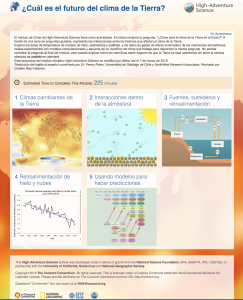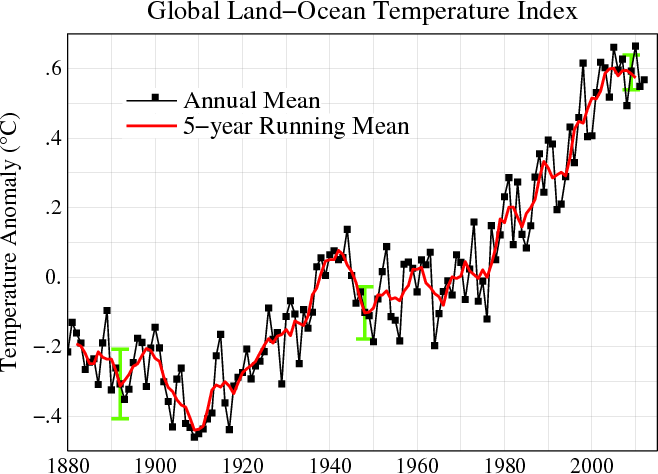We’re thrilled to announce that the popular High-Adventure Science (HAS) climate module is now available in Spanish. Many thanks (muchas gracias) to Penny Rowe (University of Santiago of Chile) and Cristián Rizzi (Universidad de San Andrés, Argentina) for taking this on! The Spanish-language version directly parallels the existing English-language version.


The HAS climate module poses the question, What is the future of Earth’s climate? This is a question to which climate scientists do not (yet) know the answer; while there is ample evidence that Earth is warming, there is uncertainty about how much the temperature will increase. There is continued active research to learn about all of the factors that affect Earth’s climate and their interactions. And it’s an interesting question, one with an answer that affects everyone on the planet.
These are types of questions that are posed by High-Adventure Science modules – big, interesting, unanswered questions about Earth and environmental science topics, coupled with real-world data and computational models. High-Adventure Science was funded by grants from the National Science Foundation.
While cutting-edge science is interesting, it can be challenging for non-scientists (students and adults alike) to understand. That’s why we scaffolded the data and models. Text and a series of guided questions help learners to figure out how factors such as carbon dioxide and water vapor affect temperature and each other (through positive feedback loops). Students can use the models to run experiments – what might happen if greenhouse gas emissions decreased by 50%, for example?

Additional scaffolding comes in the form of uncertainty-infused scientific argumentation items. Climate science, like all science, has uncertainties. Just because some of the scientific understandings are uncertain does not mean that no conclusions can be drawn, however. We don’t shy away from the complexity, but instead help students to consider some of the reasons for uncertainty with the data. For example, the real-world temperature data include error bars. Students are asked to consider the year-to-year variations, as well as the longer, multiyear trends. Additionally, students are asked to consider why the size of the error bars is different across different time periods, including methods of data collection, and how that affects the strength of conclusions that can be reached from the data.

In each of the embedded four-part argumentation items, students (1) make claims based on the data, (2) explain their claims in light of that data, (3) rate their level of certainty with their explanations, and (4) explain what affected their certainty levels. Rather than turn students into “climate deniers,” this process has helped students to more deeply learn the underlying science. In our research, students who used the High-Adventure Science climate module improved their abilities to formulate good, data- and evidence-supported scientific arguments, even with an uncertain science.
You can find both the English- and Spanish-language High-Adventure Science climate modules, as well as other High-Adventure Science modules and models, in the STEM Resource Finder at learn.concord.org/has.